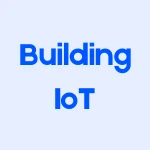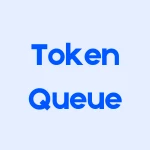
5 Problems A Smart Visitor Management System Can Solve for Your Security & Admin Teams
No matter what type of business you're in, your processes should solve real-world challenges that your teams face daily. With the automation and digitization of processes, expectations from teams are higher than ever. One such process is visitor management — a critical function for both administrative and security teams. A visitor management system should not only address visitor-related administrative tasks but also complement the security system of your office premises.
Many of the visitor problems organizations face are common, day-to-day issues that can escalate into security concerns if left unaddressed. In our observation, teams across industries become so accustomed to handling these issues manually that they fail to realize solutions exist that can prevent potential security risks. Moreover, these solutions can save time, effort, and resources.
Several security gaps exist in manual visitor management processes, and basic VMSs are not equipped to handle these complex process challenges. However, a smart visitor system has the capabilities to not only manage visitors but also prevent these loopholes. For example, consider a visitor who enters an office or college premises and loiters inside for hours without anyone’s knowledge. This is a security risk that can be easily prevented with a smart VMS designed to address such unique but real challenges that teams regularly face.
In this blog, we discuss 5 such issues that security and admin teams face on a daily basis — but don’t have to. These problems can be easily resolved or prevented with a robust visitor management software.
1. Visitors or Loiterers?
Let’s start with the loitering issue we mentioned earlier. Many types of visitors enter business or educational premises, most of them coming for work, meetings, deliveries, and so on. However, without proper identification or authentication, anyone can gain access to the premises. Security guards may also make errors in judgment, especially during busy times at entry points, hurriedly scribbling incomplete or inaccurate visitor details in a paper register or using a basic app. We suspect these errors occur regularly.
Even if the visitor is authenticated and identified as having legitimate reasons for their visit, a separate problem may arise. Once the visitor is allowed in by the security guard, how will the admin or security team know that the visitor has exited? How will they ensure that the visitor is not spending more time on the premises than necessary?
“ There is no way to manually identify a visitor who is also loitering inside your premises. ”
But a smart visitor management system can. It can even alert the security and admin teams in such a scenario — that’s what it’s designed to do, if it's truly smart.
A visitor app should also address security loopholes in your visitor processes, not just replace inefficient paper registers or Excel sheets.
2. Lost or Forgot Access Cards?
Let’s talk about the second real-life problem — it’s as real as it gets.
All the staff or employees in your office enter and exit using a system that is separate from the visitor process. In most cases, businesses and organizations use some form of biometric attendance system or RFID-based cards.
If your business uses an access card-based attendance system, your team is likely familiar with a common issue that occurs daily: an employee has lost or forgotten their access and attendance card that also serves as their employee ID. For large organizations with hundreds or thousands of employees, such incidents are quite frequent.
“How do you record the entry and exit of employees who have forgotten or lost their access cards that also records their attendance?”
How an organization resolves — or rather, deals with — this issue daily depends on the team involved. Most revert to the old-fashioned pen-and-paper method of recording entries, which undermines digitization. Alternatively, the employee may be required to complete time-consuming additional processes, say, to verify himself or herself as an employee.
This problem is fully resolved if the organization has a robust visitor management application integrated with your attendance system.
A smart visitor management system can not only record visitor details but also recognise a staff. In this case, the staff and visitor systems are integrated.
No need to revert to pen-and-paper methods, even if a staff member loses or forgets their access card.
3. How to Authenticate Visitors?
The third problem related to the visitor process is actually a fundamental one and should have been number one on the list in this blog. However, this issue is so obvious that I thought I should discuss the less apparent ones first.
The problem concerns visitor authentication.
How do you authenticate a visitor — specifically, how do you verify that the visitor is providing the correct credentials, such as their mobile number?
You guessed it right. As with most digital authentication methods, OTP or email is the way to go. However, isn’t this process somewhat time-consuming when handling visitors? OTPs also incur costs.
Asking each and every visitor for an OTP to authenticate their mobile number can be quite cumbersome for both parties. It becomes practically impossible during busy times at entry and exit points.
“Having the correct mobile number for visitors is crucial for ensuring accurate visitor data. Data accuracy has several implications, with the most important being the security of the premises. ”
The main question related to the visitor process is: Can the visitor management system authenticate visitor data — specifically, the visitor’s mobile number — without using OTP? Is there an alternative solution?
Again, let me reiterate a point I made previously: a visitor management system must also be a robust tool for maintaining the security of the premises. This requires that every visitor’s mobile number be authenticated—whether with or without OTP.
Ideally, the VMS should offer you choices in the authentication process for visitors.
4. Staff from Another Branch?
The fourth problem concerns visitors who are actually employees or staff from another branch or business location.
Your employees should not waste time at the entry point of any of your office locations or branches. They ought to be trusted — otherwise, they wouldn’t be employees — unless your business or branch requires strict visitor protocols, even for staff from other locations.
This is primarily an administrative issue in the visitor management process, which an advanced VMS can handle seamlessly and efficiently. A smart VMS recognizes staff or employees from the same organization even though they may be based at different locations.
Basic visitor management systems do not have the capability to handle multi-location processes or inter-branch movements.
5. How to Stop A Visitor Just Before Exit?
The final point is related to an issue faced by the host. A host is the person the visitor comes to meet, whether an employee, a staff member, or a resident.
The problem arises after the host has met the visitor and left the meeting venue but for some reason, the host needs to stop the visitor before they exit. How would the visitor do it?
“ How can a host stop a visitor from exiting the premises after the visitor has left the meeting room?”
Will he or she start dialing the security number? What if there are multiple exits? How would the host know which gate the visitor is using to exit?
Unlike a basic visitor management system, a smart visitor management system will have systems in place to address all of these issues.
Conclusions
These are not the only problems businesses face when handling visitors — obviously. The main question is whether a visitor system is designed to address these and additional challenges faced by the admin and security teams.
Another point we raised is — can the visitor system complement the security measures taken by your team? Or is it just a replacement for pen-and-paper methods?
Finally, there may be many other unique challenges that your teams face on the ground, as every business is different. Your visitor management system should be flexible enough to accommodate and resolve all of your visitor-related problems.






